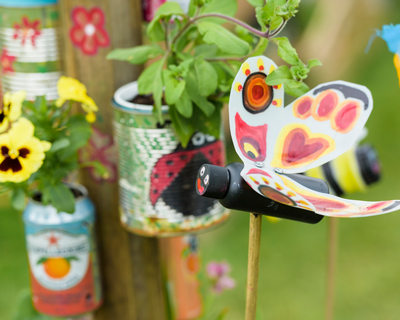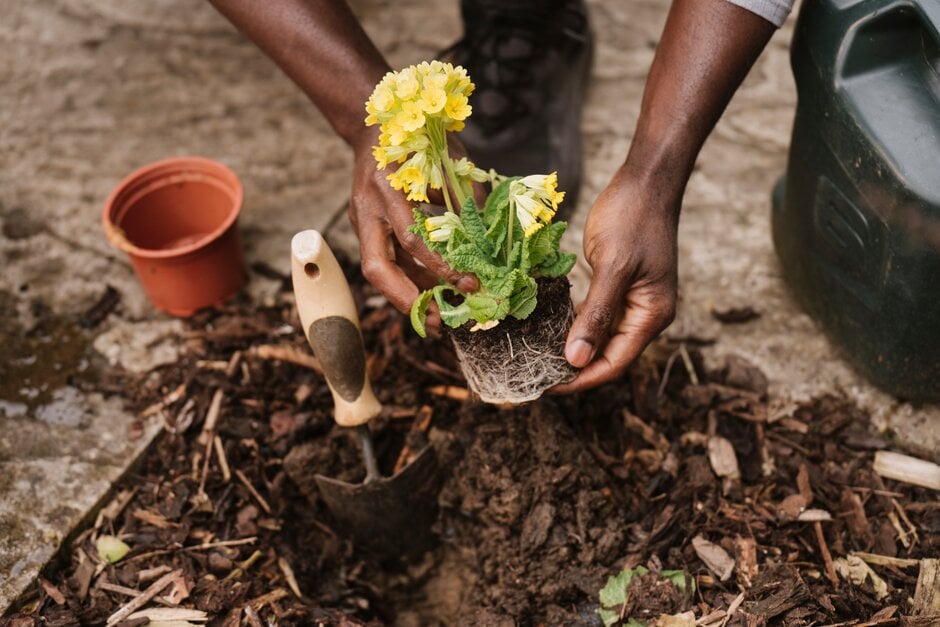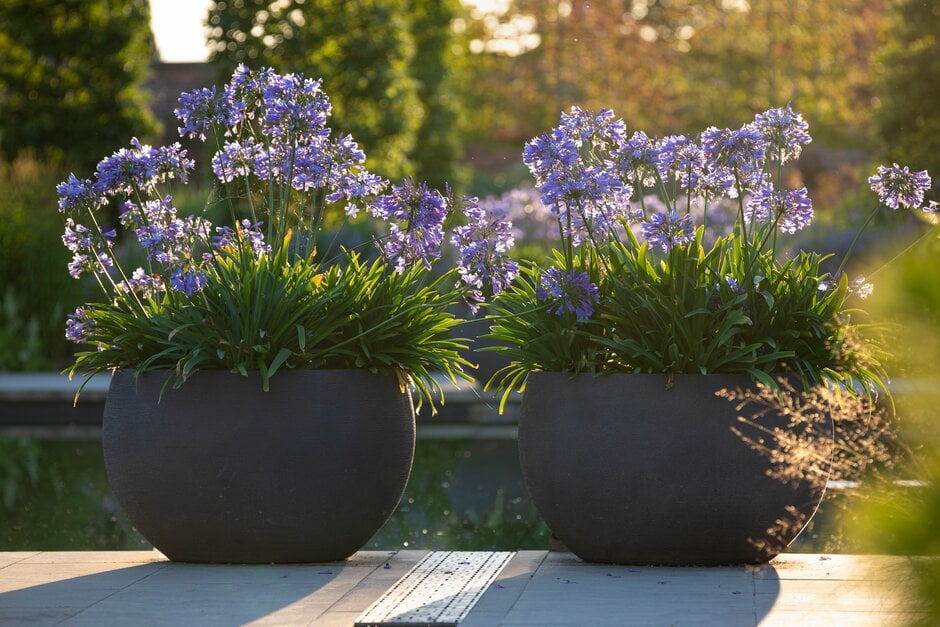DIY planters for small spaces
What do a tin can, a colander and a bookcase have in common? They’re DIY planters waiting to happen
Gardening in a small space shouldn’t cost the Earth – metaphorically or literally. We’re often told that sustainability is costly but, in my experience, getting the parts you need ethically is often also the cheapest way to do it. By getting creative with what you already have lying around, you can create a big impact, while saving pennies, plastic waste and emissions.
If you don’t have anything relevant to hand, you can find second-hand items to repurpose cheaply (or even for free) on websites like Gumtree and Freecycle or ask on a digital community noticeboard like Nextdoor. It’s not just the building materials you can save on: if you’re after tools, rather than buying new, you could try a tool library. My first port of call for all these things is simply to ask my friends and neighbours!
The outcome feels so much more rewarding (and the bragging rights so much sweeter) when you can point to something you’ve upcycled yourself. Here are three ideas to get you started, depending on what kind of small space you’re growing in.
1) Tin can to plant pot
Your small space: A window ledge, balcony or small patio
If you don’t have any tin cans, this method works equally well with biscuit tins and metal chocolate assortment tubs, though you’ll need to choose shallow-rooting plants.
- Clean out the can thoroughly and decorate it if you like.
- Use a screwdriver to carefully punch drainage holes around the bottom.
- Fill with potting soil.
- Add plants such as small
succulents
Plant suggestions: Create a herb garden (parsley, sage, mint, basil, chives and thyme will all work well - grow them each in separate tins) or grow your own chilli plant.
2) Colander to hanging basket
Your space: Porch or balcony
Make sure you use a metal colander, as plastic varieties tend to warp and wear out in direct sun and will start to break down over time.
You can also try this idea with a metal sieve, although they often lack handles, and are a little more liable to break. If you do use a sieve however, you can skip the coir mat part.
- If your liner isn’t ready-made, carefully cut your liner mat into a circle a little bigger than the circumference of the colander. Fit the mat into the colander, pushing it into shape.
- Cut your strong
twine compost - Fill the lined colander with your compost or potting mix, leaving enough space for your plants.
- Add your plants, press around them to firm up the compost, and water it all thoroughly. Take a look at the video guide below to planting up hanging baskets.
- Once the planter is full of soil and plants, tie the ends of the rope or wire together securely and slip an S-hook under or through the knot.
- Finally, hang your new basket securely from a load-bearing support.
3) Bookshelf to vertical planter
Your space: Porch or balcony
One way of doing this is to use a simple trough to plant climbers. Just be sure to choose climbing plants with tendrils or sticky pads, but avoid clinging stem roots, as these can break into brick and cause structures to crumble.
A more fun idea, in my opinion, is to create a stacked vertical planter with a series of troughs - like this bookcase idea! You’ll want to use a bookcase made from solid wood (not MDF) so it will remain sturdy and not warp when wet.
- Measure the distance between the shelves and make a note of this.
- Put the
drill - Optional: Cut the plastic sheet to cover the inside of the bookcase and use the staple gun to secure it as a liner. This will help stop the wood from getting damp and rotting over time. You can also cut and attach pieces for the inside of each of the shelves.
- Take a shelf and place it at the bottom of the bookcase, pulling it out about 1.5cm (about ½ inch) from the back board. This gap between the shelf and the backboard will allow water to drain.
- Secure the lower, back edge of the shelf in place by drilling into it on both sides, from the outside of the bookcase. Don’t do this too tightly just yet, you want the shelf to pivot.
- Raise the front edge of the shelf up at an angle (about 40 degrees) to create the trough shape.
- Secure the front, top edges of the shelf tight, and then tighten the screws at the lower edge.
- Using the original distance between the shelves, measure this distance up from the lower, back edge of the first trough you made, and use this as the placement for the lower, back edge of the next trough, above it.
- Repeat the steps above until all the troughs are in place.
- Fill the troughs with compost and plants, and water thoroughly.
- Place the back of the bookcase planter against a sturdy wall.
Plant suggestions: Create a vertical kitchen garden (e.g. strawberries, thyme, parsley, calendula) or medicinal garden (e.g. catnip, tulsi, lemon balm).
Whether it’s an empty paint can, a leftover colander, or a disused bookcase, there’s always a way to bring life (literally) into everyday objects. These ideas are just a springboard for your own - so look around your home, get creative, and see what ‘trash’ you can turn to plant-filled treasures.
Happy planting!


